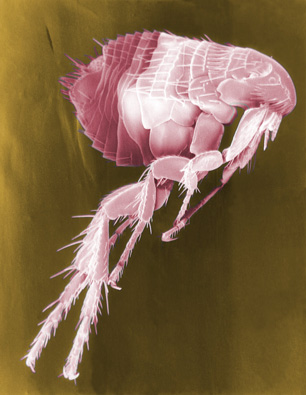Lindane
| EPA Maximum Contaminant Level (MCL) |
0.0002 mg/L |

Lindane has been used to treat fleas, lice and scabies.
Lindane is an insecticide used on crops, forests and therapeutically to treat parasites such as scabies. Its use in the United States has been restricted since 1983, though it is still used to control fleas and lice on pets and livestock, and on many crops. It arrives in drinking water primarily through these insecticidal uses.
Health Effects of Lindane
Acute exposure to large amounts, according to the EPA, can lead to symptoms of fever and “pulmonary edema,” a build-up of fluid in the lungs. It is not a known carcinogen , the agency also warns of kidney and liver concerns associated with long term exposure:
Some people who drink water containing lindane well in excess of the maximum contaminant level [0.0002 milligrams per Liter] for many years could experience problems with their kidneys or liver.
Water Treatment for Lindane
The EPA recommends granular activated carbon (GAC) for the treatment of lindane.
Sources: EPA (1), EPA (2), WHO, Photo: WikiMedia, author: CDC/Janice Haney Carr
Site Index
Filtration Systems
- Aeration for Iron & Sulfide
- Backwashing Filters
(whole house & well units)
- Chlorine & Chemical Injectors
- Countertop Water Filters
- Emergency Filters
- Garden Hose Filters
- Reverse Osmosis, Residential
- Reverse Osmosis, Commercial
- Shower Filters
- Specialty Filters
- Ultraviolet Systems
- Undersink Filters
- Water Softeners
- Whole House Filters
Cartridges
Parts
- Replacement Parts
- Faucets
- Filter Media
- Fittings
- Housings
- O-rings
- Pumps
- Pura UV
- R.O. Parts
- R.O. Tanks
- R.O. Booster Pump
- VIQUA UV